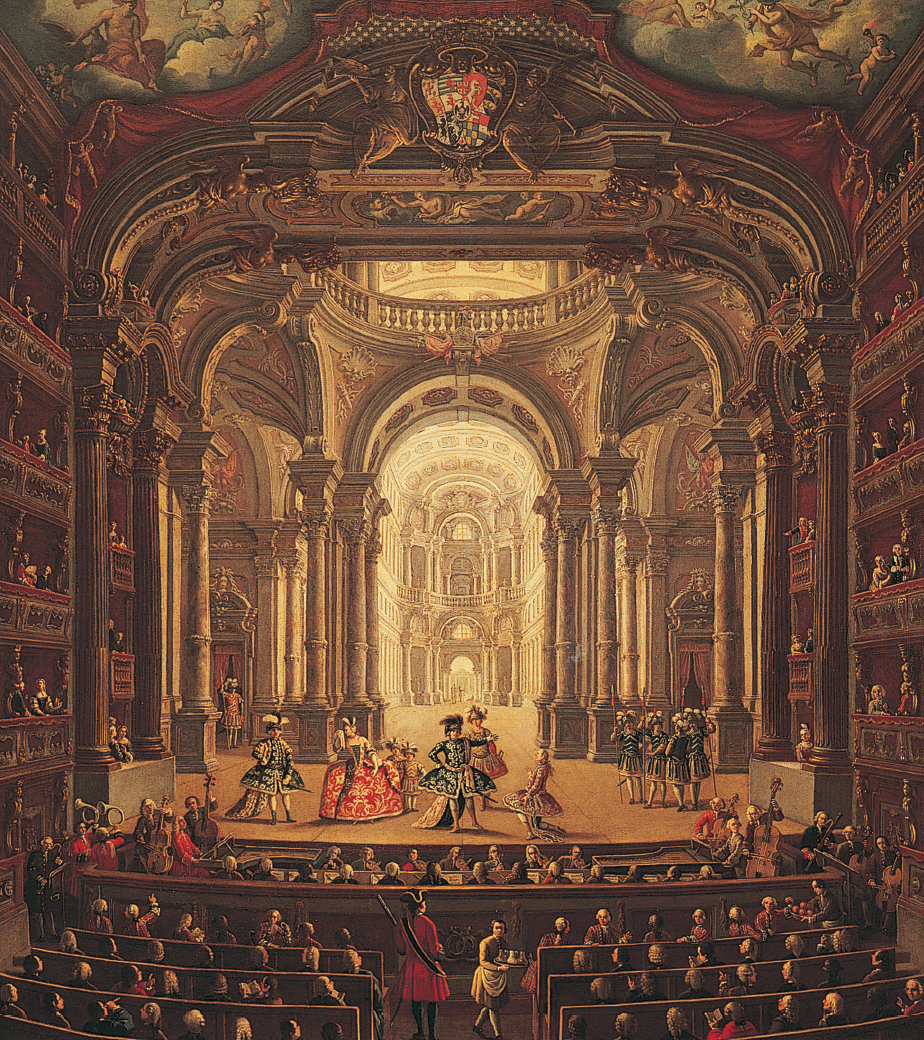2 | Musical Life in the Early Eighteenth Century
The eighteenth century was a great age for the crafts — the age of Stradivarius in violin making, Chippendale in furniture, and America’s own Paul Revere in silver, to name just a few. Composing music was also regarded as a craft. The Romantic idea of the composer — the lonely genius working over each masterpiece as a long labor of love expressing an individual personality — was still far in the future. Baroque composers were more likely to think of themselves as servants with masters to satisfy. They were artisans with jobs, rather than artists with a calling. They produced music on demand to fill a particular requirement.
This is why many Baroque pieces do not seem especially individualized in their expression. They are not so much unique masterpieces as satisfactory examples of their style and genre, of which there are many other equally satisfactory examples.
There were three main institutions where composers could make a living by practicing their craft. In order of increasing glamour, these were the church, the court, and the opera house.
- The church. In the cathedrals, monasteries, and town churches of the Baroque era, it was taken for granted that the organists or choirmasters would compose their own music, then play and conduct it. Organists had to improvise or write out music to accompany certain parts of the church services. They played long pieces to see the congregation out when the service was over.
At large institutions, important occasions called for elaborate music scored for chorus, soloists, and instruments: a Catholic Mass for the installation of an archbishop, for example, or a Lutheran church cantata for the anniversary of the Reformation. Church musicians were also responsible for training the boys who sang in their choirs, often in special choir schools.
- The court. Under the patronage of kings or members of the nobility, a musician was employed on the same terms as a court painter, a master of the hunt, or a head chef. Musicians had to work entirely at the whim of their masters; still, they could count on a fairly secure existence, a steady demand for their services, and a pension.
Naturally, conditions varied from court to court, depending on the ruler’s taste. For some, music was a good deal less interesting than hunting or banqueting. Others could not have enough of it. Frederick the Great of Prussia was an enthusiastic flutist, so at his court concertos and sonatas for flute were composed at an especially healthy rate. He wrote many himself.
Court musicians kept in better touch with musical developments than church musicians, since they were required to travel with their employers. They made extended trips to major cities, where diplomacy was eased along by music composed for the occasion.
- The opera house. Although many opera houses were attached to courts, others were maintained by entrepreneurs in major cities. (The public opera house existed before the public concert hall; in the Baroque era, public concerts were not a regular feature of musical life.) Composers traditionally conducted their own operas, sitting at the harpsichord. Audiences were alert to the most exciting new singers, and it was part of the composer’s job to keep the singers well supplied with music that showed off their talents. Opera revivals always required recomposition — often by a new composer — in order to satisfy new singers. It was an exciting, unpredictable life, promising great rewards as well as daunting reverses.

The life stories of the two greatest composers of the late Baroque period show a good deal about the interaction between musicians, the patrons who supported them, and the institutions that required music. Johann Sebastian Bach labored as a church organist, a court musician, and then a major composer-